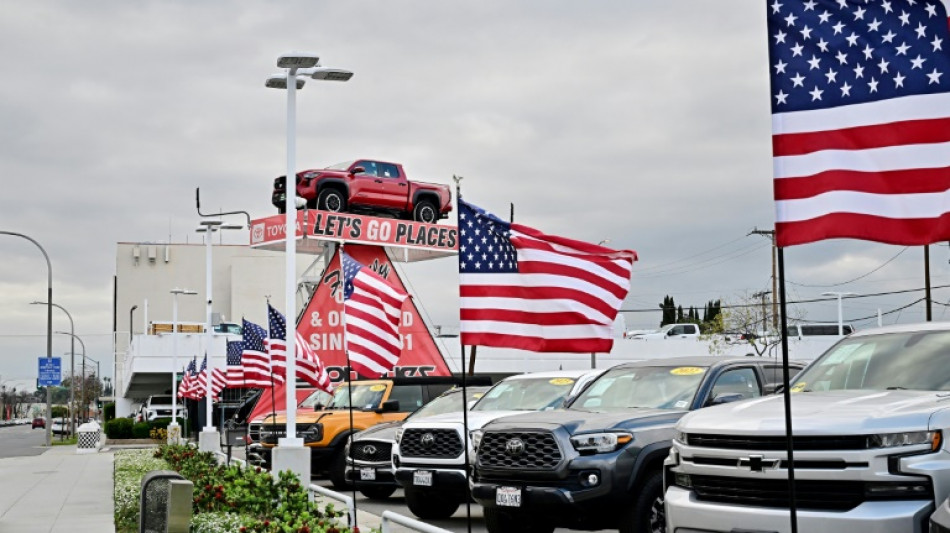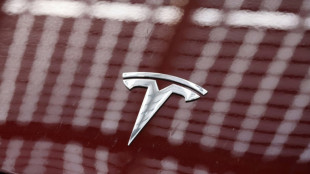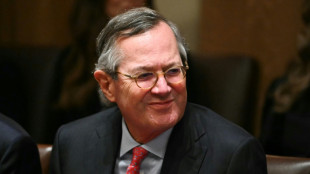

What happens on Trump's 'Liberation Day' and beyond?
US President Donald Trump has launched a volley of tariffs impacting allies and adversaries this year, promising "Liberation Day" on Wednesday with action targeting countries that have persistent trade gaps with his country.
What can we expect and what else is in the pipeline?
- Tariffs imposed -
Trump fired his first salvo in early February, announcing tariffs of up to 25 percent on goods from Canada and Mexico while demanding they do more to stop illegal immigration and the smuggling of the illicit drug fentanyl.
While he postponed their implementation to March and later provided partial relief to aid the auto industry, the state of these exemptions after Wednesday remains unclear.
China won no such reprieve over the same period. The Trump administration slapped an additional 20 percent tariff on goods from the world's second-biggest economy, over its alleged role in supply chains of drugs like fentanyl.
Trump has separately taken aim at key sectors, with 25 percent tariffs on steel and aluminum imports taking effect in mid-March. Tariffs on imported autos, meanwhile, kick in at 12:01am eastern time (0401 GMT) April 3.
The president has unveiled blanket 25 percent tariffs on direct and indirect buyers of Venezuelan oil too, which can happen as soon as Wednesday.
- Analysts' expectations -
Trump has not detailed the scale of his reciprocal tariffs, aimed at correcting trade imbalances and practices deemed unfair.
But these will likely target around 15 percent of US trading partners, dubbed a "Dirty 15" by Treasury Secretary Scott Bessent.
Analysts expect the group could be similar to economies mentioned by the US Trade Representative (USTR) in its call for comments to identify unfair trade practices.
Parties on the list which the United States has notable trade deficits with include China, the European Union, Mexico, Vietnam, Taiwan, Japan, South Korea and Canada.
According to the White House, Trump's reciprocal duties will consider the tariffs that partners impose on US goods, and other factors like value-added taxes or digital service taxes.
Trump could unveil further sector-specific tariffs on Wednesday, having earlier indicated plans to target pharmaceuticals, semiconductors and lumber.
- Retaliation -
US trading partners have pushed back on Trump's measures.
China swiftly imposed counter-levies of 10 percent and 15 percent on US agriculture goods like soybeans, while the EU unveiled countermeasures in response to US steel and aluminum tariffs.
The bloc threatened duties to hit some $28 billion of US goods in stages from April, affecting products from bourbon to motorbikes.
But their start has been delayed until mid-April to allow more time for dialogue. Trump has warned of punishing 200 percent tariffs on Europe's wine and spirits sector in the meantime, alarming foreign producers and US businesses.
More recently, major European economies urged for firm action by the bloc over Trump's auto tariffs.
Canada has struck back with tariffs on around Can$60 billion ($42 billion) in US goods, hitting steel products, aluminum and items like computers.
But Mexico is waiting until early April to respond comprehensively.
- Other investigations -
Trump's trade actions can continue past Wednesday, with the president already having ordered new probes into lumber and copper imports.
These could form the basis for further charges.
And the USTR has an ongoing investigation into China's practices in the maritime and logistics sectors as Trump looks to "resurrect" American shipbuilding.
The trade envoy's office has found that Beijing's policies warrant action, proposing remedies like port entrance fees of up to $1.5 million for Chinese-built ships.
But businesses are contesting the plan, warning of higher costs and port congestion as carriers seek to avoid paying new fees.
- 'America First' action -
Similarly, a series of reports are due Tuesday under an "America First Trade Policy" that Trump signed on his inauguration day. These could lead to more trade actions.
Deliverables include the results of an investigation on the "Phase One" trade agreement marking a truce in Washington and Beijing's escalating tariffs war in Trump's first presidency.
The order also called for export control recommendations to secure US technological advantages and a probe on the US-Mexico-Canada trade agreement.
It sought a review of proposals surrounding permanent normal trade relations with China as well.
D.Verheyen--JdB



